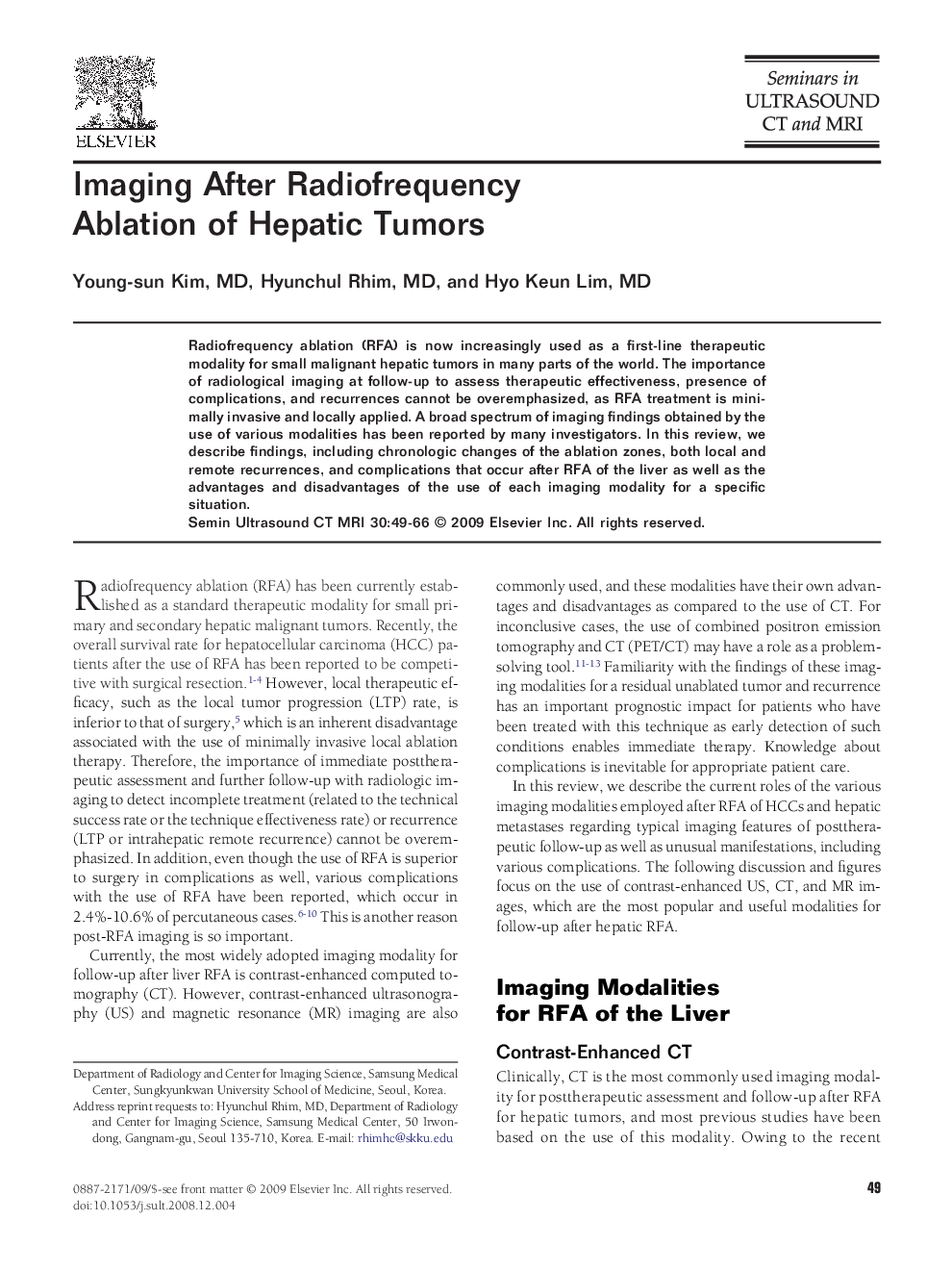| Article ID | Journal | Published Year | Pages | File Type |
|---|---|---|---|---|
| 2737798 | Seminars in Ultrasound, CT and MRI | 2009 | 18 Pages |
Radiofrequency ablation (RFA) is now increasingly used as a first-line therapeutic modality for small malignant hepatic tumors in many parts of the world. The importance of radiological imaging at follow-up to assess therapeutic effectiveness, presence of complications, and recurrences cannot be overemphasized, as RFA treatment is minimally invasive and locally applied. A broad spectrum of imaging findings obtained by the use of various modalities has been reported by many investigators. In this review, we describe findings, including chronologic changes of the ablation zones, both local and remote recurrences, and complications that occur after RFA of the liver as well as the advantages and disadvantages of the use of each imaging modality for a specific situation.
